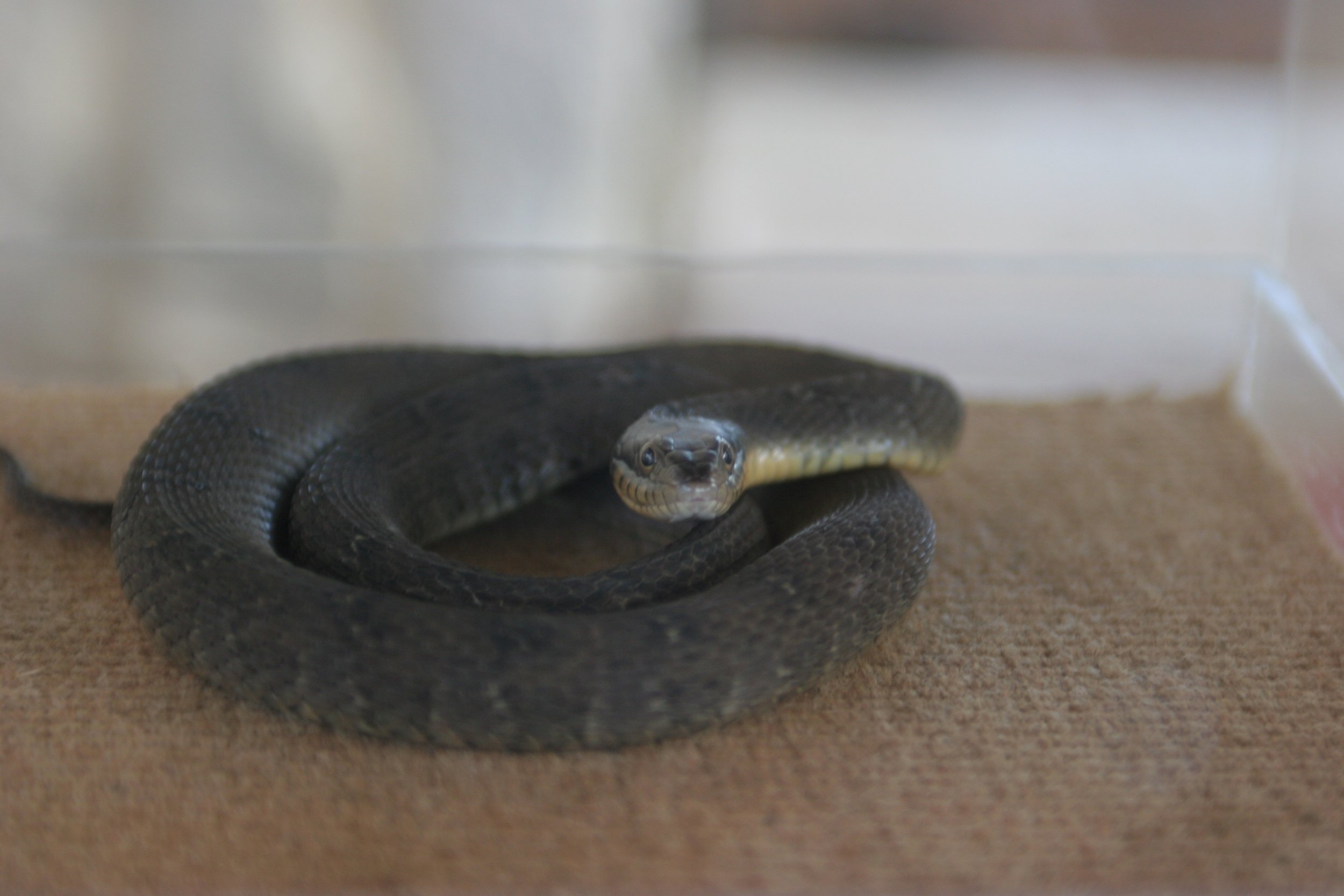Blotched Water Snake
Nerodia erythrogaster, commonly known as the plain-bellied water snake or plainbelly water snake, is a familiar species of mostly aquatic, nonvenomous, colubrid snake endemic to the United States.
This species ranges through much of the southeastern United States, from Michigan to Delaware in the north, and Texas to northern Florida in the south, but it is absent from the Florida peninsula and the higher elevations of the Appalachian Mountains. They are almost always found near a permanent water source, a lake, stream, pond, or other slow moving body. Adults are 24–40 inches (76–122 cm) in total length, and can reach up to 55 inches in some states such as Kansas.
It gets its common name because it has no patterning on its underside. Subspecies can vary in color from brown, to gray, to olive green, with dark-colored blotching down the back, and an underside that is yellow, brown, red, or green.
It is quick to vigorously defend itself by striking repeatedly and flattening its head making it look like a cottonmouth. Which is why it's commonly mistaken for a venomous snake.
This species bears live young (ovoviviparous) like other North American water snakes and garter snakes. In North Carolina and Georgia, the plain-bellied water snake breeds from April to June, and broods of 5-27 young are born in August to October. In 2014 a captive female produced two healthy offspring via parthenogenesis.

By Dawn Casey. CC BY-NC-ND 2.0, via Flickr

